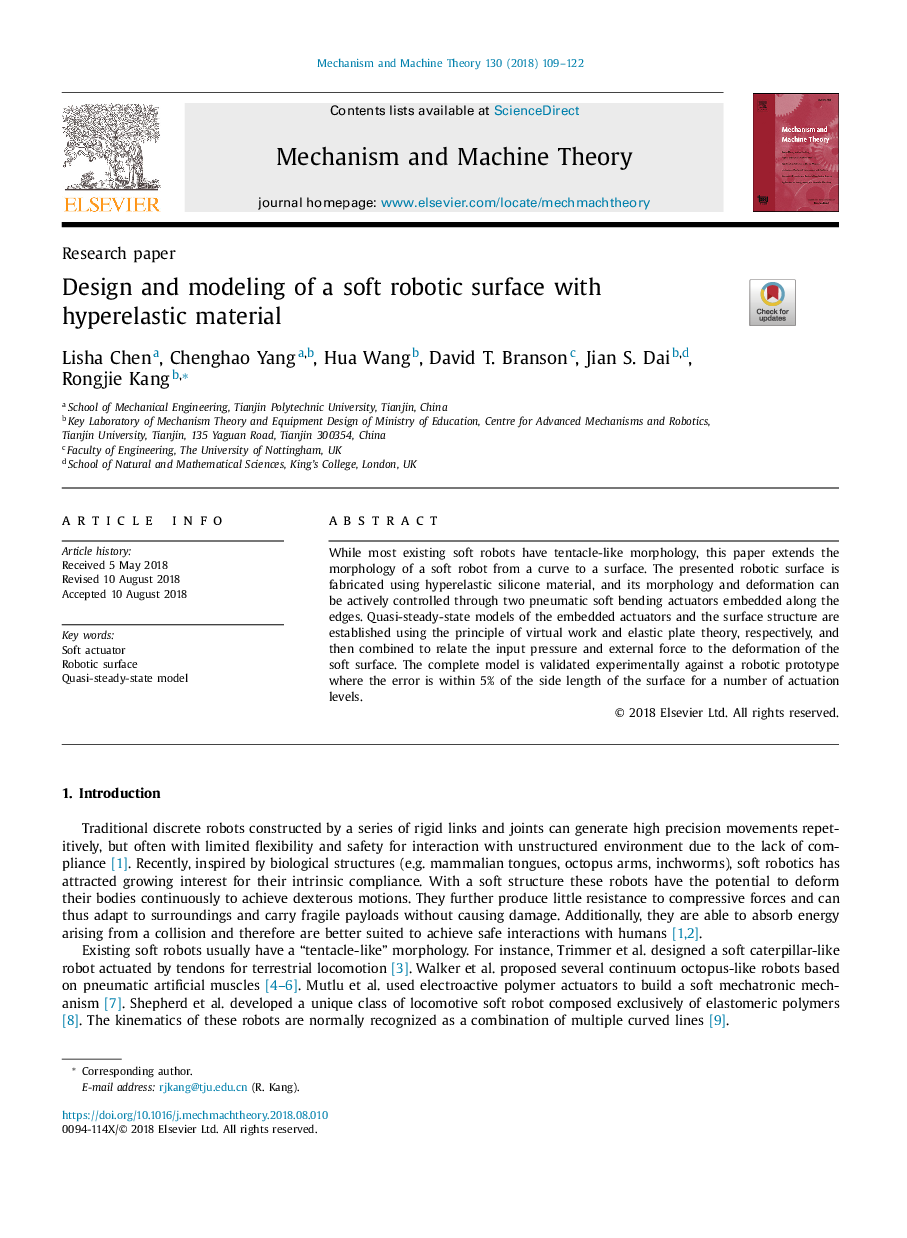| Article ID | Journal | Published Year | Pages | File Type |
|---|---|---|---|---|
| 8947712 | Mechanism and Machine Theory | 2018 | 14 Pages |
Abstract
While most existing soft robots have tentacle-like morphology, this paper extends the morphology of a soft robot from a curve to a surface. The presented robotic surface is fabricated using hyperelastic silicone material, and its morphology and deformation can be actively controlled through two pneumatic soft bending actuators embedded along the edges. Quasi-steady-state models of the embedded actuators and the surface structure are established using the principle of virtual work and elastic plate theory, respectively, and then combined to relate the input pressure and external force to the deformation of the soft surface. The complete model is validated experimentally against a robotic prototype where the error is within 5% of the side length of the surface for a number of actuation levels.
Keywords
Related Topics
Physical Sciences and Engineering
Engineering
Industrial and Manufacturing Engineering
Authors
Chen Lisha, Yang Chenghao, Wang Hua, David T. Branson, Jian S. Dai, Kang Rongjie,
